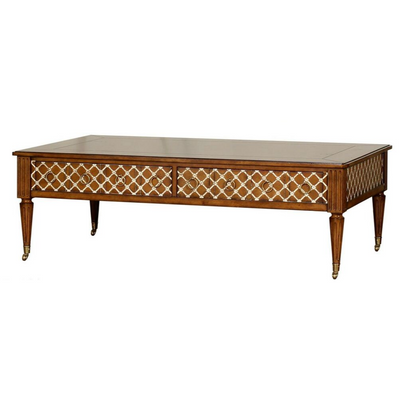Warranty & Care Information
We pride ourselves on providing you with the very best quality furniture. Inspections by our quality control (QC) team are undertaken before any product leaves the manufacturers factory. They ensure that it conforms to our technical drawings, specifications and relevant Australian safety standards.
A secondary QC process is occurs upon the arrival into our warehouse. A final inspection of your goods is completed prior to dispatch.
Warranty
We stand behind all our product and offer a 12 month structural warranty on all goods. Warranty period begins when your order is fulfilled.
GENERAL LIMITATIONS
This warranty is void if the product has been modified or altered in any way after shipment from our warehouse.
This warranty is void if any after-market protective treatments are applied to the product after the original packaging has been opened.
This warranty applies under conditions of normal residential usage. It does not apply to defects or damage resulting from negligence, abuse or misuse – including but not limited to inadequate or improper maintenance, exposure to water, salt air, chemicals, accidents, any use for which the product was not designed, or commercial use (including rental, business, commercial, institutional or any non-residential use), nor does it cover ordinary wear-and-tear.
Due to the natural materials used in the manufacturing process, and that most of our products are handmade, minor variations will occur from piece to piece. These are not considered defects under this warranty.
Stone and marble contain vein-lines, hairline fissures, pores and colour variations that are natural characteristics and are not considered defects under this warranty. Stone is porous therefore, spills allowed to seep in may not be able to be removed. Use coasters or a tablecloth to protect from spills or sweat rings. Wipe any spills immediately.
Full-grain leather is a natural product. The wrinkles, skin folds and scars are authentic and a natural part of the leather. These characteristics enhance the beauty and quality of the hides and are not considered defects.
Changes of colour in woods, finishing materials and fabric due to sunlight, are not considered defects under this warranty.
Extremes in temperature and humidity can cause both wood and finishing materials to shrink, swell, warp, split, and glue seams to fail. These damages are not considered defects under this warranty.
Rubber lamp bases, lamp cords and some types of plastic materials may soften the finish if left in direct contact with furniture for an extended period of time. Such damage is not considered a defect under this warranty. To avoid this, use felt or leather under these materials where they are in direct contact the furniture.
Direct contact with petrochemical products, (nail polish remover, alcohol, etc.) will damage the finish, such damage is not considered a defect under this warranty. Wipe up any spills or dampness on your furniture immediately.
Our products are not designed for outdoor use, unless otherwise specified. Images that may showcase items in an outdoor setting are for creative purposes only and not an indication that it is suitable for outdoor use.
Damage due to exposure to outdoor elements is not considered a defect under this warranty.
Some goods may also come with an extended Manufacturer’s Warranty.
Painted Timber Products
Our European Collection products are made from solid, hardwood timber, with a painted finish. Due to the nature of timber, physical vibration during shipping, delivery, changes in temperature, and the static paint finish, hairline cracks will occur in the paint finish, especially along glue lines and joints. This is part of the rustic nature of this range, and is not a defect. If you have any hesitations please avoid purchasing painted, solid timber products. If you are after a ‘perfect’ finish, opt for painted composites such as MDF or plywood.
General Care Information
TIMBER
Timber is hygroscopic, which means its moisture content will fluctuate based on the humidity of the surrounding air. Timber will absorb varying degrees of moisture depending on the environment and/or changes in that environment. Humidity will cause higher moisture absorption and expansion, whereas timbers in drier air (eg. in air-conditioned or cooler areas) will release moisture and contract. Over time, this expansions and contractions in the wood, can cause and cracking or warping. Cracks and vein marks may be more visible on painted timbers, especially at joins. This, along with naturally occurring knots, gum veins or variations, is not an indication of an inferior product, but simply a feature of the changing face of this natural timber.
i) Oak
Oak is known for its strength, durability and beauty. Its prominent grain means little spots and dings just blend in. However, Oak is porous so it can stain easily, especially if it doesn't have a modern finish like a glossy varnish. It can also become dry and cracked if not properly moisturized. To maintain oak furniture, you'll need to protect it from extreme temperature swings, moisture, sun and heat. Avoid placing it too close to radiators, heaters, gas or wood fires, air-conditioners or in direct sunlight.
ii) Painted Timber
Always avoid cleaning painted timber with liquids and harsh chemicals. To clean your painted timber surface, use a dust cloth or feather duster to remove dust and debris. Removing dust is essential as dust collection absorbs and holds moisture on humid days and damp evenings, causing the timber to expand/crack. You may use a slightly damp cloth or mild detergent in lukewarm water to remove liquids that might stain, however be sure that the cloth is not soaked excessively and the surface is dried with a clean dry cloth immediately after wetting.
The placement of your furniture can affect its longevity. Placing furniture where it can touch external walls can create moisture build-up, and placing it too close to radiators, heaters and gas or wood fires can increase the risk of scorch damage or dis-colouration. Sharp objects such as buckles, rings and even the claws of your pets can tear, scratch or break the furniture. Protect your furniture from direct sunlight and rotate reversible cushions regularly. We recommend regular care and maintenance on items in our collection.
LEATHER
Most leathers generally do not need much day-to-day maintenance – periodic dusting with a soft, dry cloth is sufficient. Avoid placing leather sofas near heat sources or direct light.
In the event of stains from oils, fats, makeup, chocolate or beverages, remove excess liquid by dabbing with an absorbent paper towel. Gently wipe the stain from the outside edges towards the centre with a clean damp cloth using water and neutral soap. Dry the stain, gently wiping with a dry cloth.
When cleaning oily stains do not press hard, as this can cause the substance to enter the pores of the leather. Natural leathers are un-coated and may incur marks or discrepancy of colour where it has come into contact with sharp objects. This is a standard occurrence and forms part of the leathers character and uniqueness.
RATTAN & CANE
To clean rattan furniture brush regularly with a dry medium-bristle brush, such as a vegetable brush, to remove dirt build-up from between the reed strands. A mild mix of detergent can be used if the item is very dirty, or to spot clean stains.
Rattan, wicker and cane can withstand moisture to a certain extent, however with too much water they will become limp, loose and saggy. Wicker will resume its size and shape when it dries, but if too much water has been used in cleaning, the strands of reed may be disturbed and remain distorted after drying.
Some rattan and cane products are sun-bleached, distressed and/or stained. Sun-bleached or distressed cane is lighter in colour and generally a little harder than a natural or dark colour cane. Minor chipping or fading of stained or painted rattan and cane can be touched up with stain-pens, available at crafts stores.
Cane is sometimes recommended for outdoor use, however if left outdoors it will deteriorate after a few years depending on exposure to the elements.
FABRICS
No fabric is 100% colour-fast and it is impossible to prevent fading if the right precautions are not taken. Winter sun sitting low in the sky can have the largest impact, particularly when curtains are pulled back. However, any room with a lot of daylight can cause fabrics to fade.
Fading and Sun Damage - Dyed fabrics, particularly those dyed in bright colours, are more susceptible to fading. Constant exposure to the direct rays of the sun can break down the fabric fibres, causing them to become brittle and increasing the risk of a rip or tear during cleaning.
Oxidation - Fumes from fires of all kinds, car exhausts and kitchen stoves produce a sulphur compound which, when combined with humidity and oxygen, produces a mild sulphuric acid. This can cling to the fabric and contribute to deterioration and discolouration. We suggest regular professional cleaning to reduce the impact of this.
Yellowing - Tobacco smoke will cause a yellow or brown stain on most fabrics and is more prominent on light coloured materials. Pilling is often a result of wear and tear, but climatic conditions and air quality can also contribute. Fibers in some clothing can transfer pills to the furniture. Pilling is not a defect and can easily be removed using a battery operated pilling appliance.
Shrinkage - All fabrics are prone to shrinking and allowances should be made. An allowance of 3% is an acceptable industry standard.
Spills and Stains - Attend to stains and spills as quickly as possible after the incident. Mop up any spilled liquid and scrape away any dirt, then clean as recommended for the type of stain. Be careful about over saturating fabrics, especially with detergent, as this can create watermarking or other stains.
Oil Based Stains - Use warm water mixed with household soap- test a small hidden part if the fabric first. Rub gently and blot dry with a clean towel. Then use clean, cold water and go through the blot drying process again. To finish use a hair dryer held at least 30cm from the surface, working outwards from the centre of the stain. Clean entire panels of fabric rather than specific spots as this will prevent the spot from standing out.
Non-Oil Stains - Rub gently with a dry-cleaning solvent and blot dry with a clean towel. Then use clean, cold water and go through the blot drying process again. To finish use a hair dryer held at least 30cm from the surface, working outwards from the centre of the stain in place of the soap and water solution.
Alcohol - Mop up excess liquid, dab the stain then blot repeatedly with a solution of cool water and detergent. Repeat and blot dry with a clean towel.
Blood - Mix a solution of one teaspoon of ammonia in a cup of cold water and dab at the spot. Do not over rub. Blot with a clean towel and repeat the process. Once the spot is gone, continue to dab the stain area with water and blot. Repeat after fifteen minutes, this time with white distilled vinegar. Blot once again, using a dry towel.
Chewing Gum - Rub an ice cube over the gum to harden it, then carefully scrape it up with a blunt knife. Any remainder should clean up with dry cleaning fluid.
Coffee and Tea - Sponge the stain with warm water then apply warm glycerin. Leave it for 30 minutes and blot with warm water, drying quickly.
Cosmetics - Sponge with warm water then apply warm glycerin. Wait 30 minutes then blot with warm water, drying quickly.
Fruit/Fruit Juices - Blot or wipe up as much as possible, leaving the stained area dry. Blot with cold water. If any trace remains, dab the spot with a mixture of liquid detergent, vinegar and water. Once the stain is removed blot with water to remove traces of vinegar and detergent.
Grease - Dry cleaning fluid is the best solution for grease. If any trace of stain remains after dabbing with the fluid, go over it with a mixture of detergent and warm water then finish with a clean slightly damp cloth.
Ink - Add some warm glycerine, then leave for at least 10 minutes. Apply some liquid detergent and rub gently. Use clean water and blot dry quickly.
Milk - Blot with a clean soft cloth, then use clean water on the area. Blot with a solution of water, detergent with a small amount of ammonia. Wait u*ntil dry, and then go over the area with some dry-cleaning fluid. To finish, blot lightly with a cloth that has been wet with some rubbing alcohol.
Ice Cream - Wipe excess and blot with clean water mixed with liquid detergent. Make sure you do not saturate the cloth. Once dry, use dry-cleaning fluid for any remaining stain.
Soft Drinks and Confectionery - Sponge the stain with water, and then add some warm glycerin. Finish by blotting with water. Apply a small amount of detergent with a cloth then blot with a cloth wrung out in a solution of two thirds warm water and one third white vinegar.
Shoe Polish - Apply liquid paraffin to loosen the stain then sponge with dry cleaning fluid.
Water Spots - Blot the area with a cloth and then apply some white vinegar. After a few minutes wet the area with cold water, blotting with a dry cloth. Always brush in the same direction of the pile when dry.
CUSHION INSERTS
All inserts require regular and ongoing maintenance. The easiest method is to regularly ‘plump and fluff’ and, where possible, flip them. Change cushions from one side of the piece to the other and flip. Some fabric may naturally ‘creep’ or ‘slide’ over time and with use. Flipping will minimise this, however sometimes it is necessary to unzip the cushion and pull or rub the fabric back into place.
Feather - Feather-filled cushions, especially when used as base cushions, require weekly or fortnightly ‘plumping and fluffing’ and flipping. If this is not done they may lose their appearance and comfort level. These cushions may lose some feathers over time. This should be minimal and is referred to as leaching. Note that feather inserts can lose up to 10% of their feather fill over the period of use, this is a natural and unavoidable occurrence. It may be necessary, after many years of use, that the inserts are professionally re-filled. Feather
Wraps/Layers - Feather-filled ‘wraps’ or ‘feather layers’ have inserts filled with feather, or feather/fibre, wrapped around a polyurethane core. These cushions require minimal maintenance. Note that feather inserts can lose up to 10% of their feather fill over the period of use, this is a natural and unavoidable occurrence. It may be necessary, after many years of use that the inserts are professionally re-filled.
Fibre - Fibre-filled cushions require minimal maintenance.
Polyurethane (Foam) - requires regular flipping and movement of polyurethane cushions is essential. Polyurethane inserts may soften by ten to fifteen percent over the life of the insert.
STONE
Marble is very delicate and must be cleaned with pH neutral, gentle cleaners. Acids, even the mild acid in vinegar, will dissolve the finish and permanently etch the surface. Stone is very porous and therefore will soak in liquid spills. If liquid spills do occur, wipe it dry as soon as possible by blotting dry with a clean cloth. The best method for cleaning stone is to wet a clean cloth with lukewarm water to wipe the surface, and to remove any marks. You can use a very mild detergent to remove any stains, but this should not occur more than once every few months. Do not place glasses on it directly and always use a dry cloth to dry and shine the stone to prevent liquids from getting into the stone core.
GLASS & MIRRORED GLASS
Glass and/or mirrored surfaces require low maintenance. A weekly wipe with a slightly damp chamois is sufficient. Glue and pencil marks can be removed by applying some Eucalyptus oil with a soft cloth. Objects placed on glass or mirrored glass should always have a felt protector applied to the under side of the item so as not to scratch the surface. Be sure that items placed on the glass should be the correct weight for the glass thickness.
Resin & Acrylic
Resin and Acrylic are both synthetic materials and can scratch/mark easily, so avoid placing sharp objects on their surfaces. You should also always ensure that you do not have the furniture too close to a heat source. Certain solvents can damage Resin and Acrylic, so it is best to keep your furniture away from harsh chemicals. To clean your furniture, use a mild detergent in lukewarm water with a clean soft cloth to wipe the surface down. Always rinse the detergent off the surface with a new clean cloth. Once the surface has been appropriately cleaned, dry the surface by blotting with a clean soft cloth.









